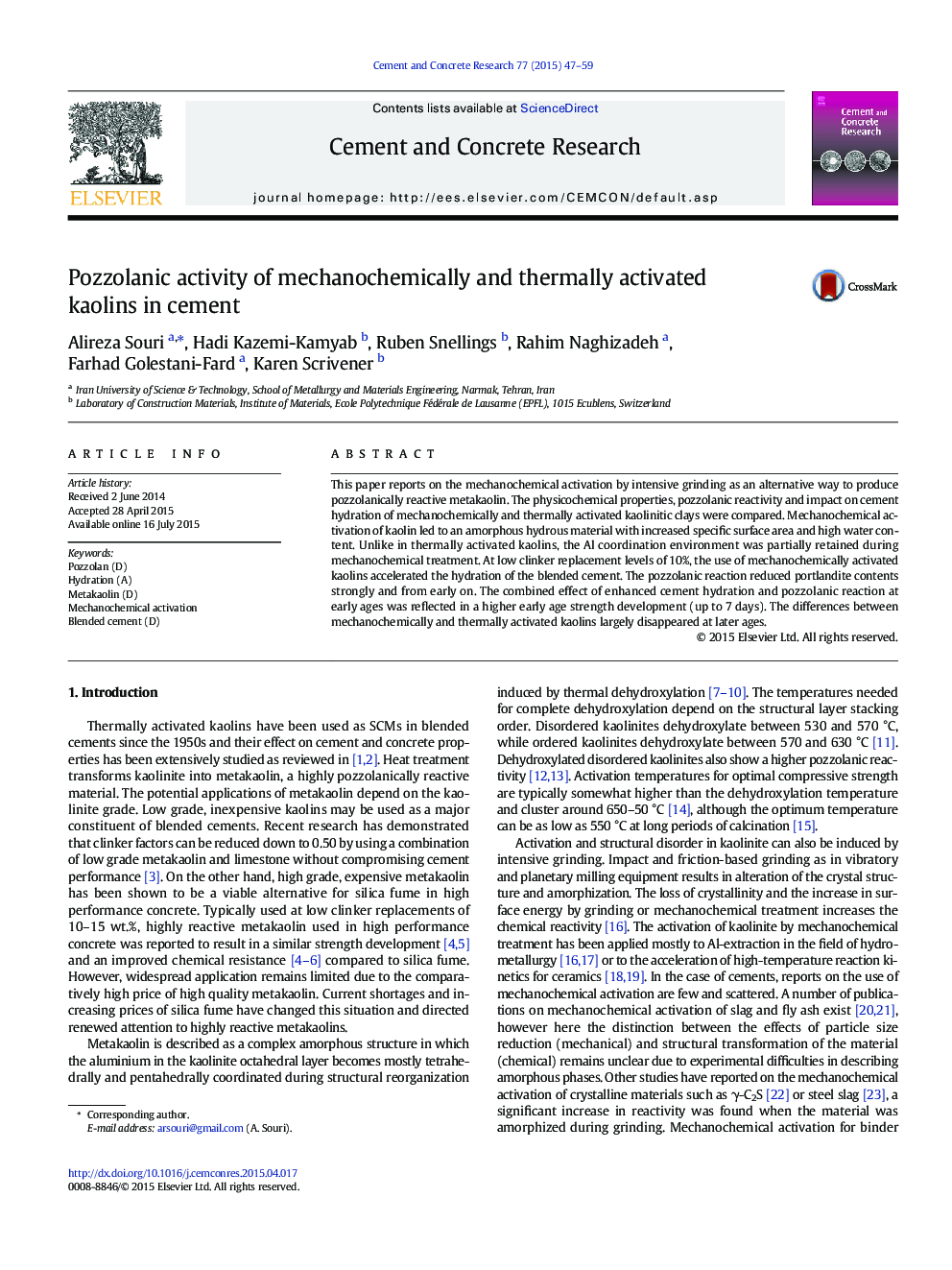| Article ID | Journal | Published Year | Pages | File Type |
|---|---|---|---|---|
| 1456043 | Cement and Concrete Research | 2015 | 13 Pages |
This paper reports on the mechanochemical activation by intensive grinding as an alternative way to produce pozzolanically reactive metakaolin. The physicochemical properties, pozzolanic reactivity and impact on cement hydration of mechanochemically and thermally activated kaolinitic clays were compared. Mechanochemical activation of kaolin led to an amorphous hydrous material with increased specific surface area and high water content. Unlike in thermally activated kaolins, the Al coordination environment was partially retained during mechanochemical treatment. At low clinker replacement levels of 10%, the use of mechanochemically activated kaolins accelerated the hydration of the blended cement. The pozzolanic reaction reduced portlandite contents strongly and from early on. The combined effect of enhanced cement hydration and pozzolanic reaction at early ages was reflected in a higher early age strength development (up to 7 days). The differences between mechanochemically and thermally activated kaolins largely disappeared at later ages.
